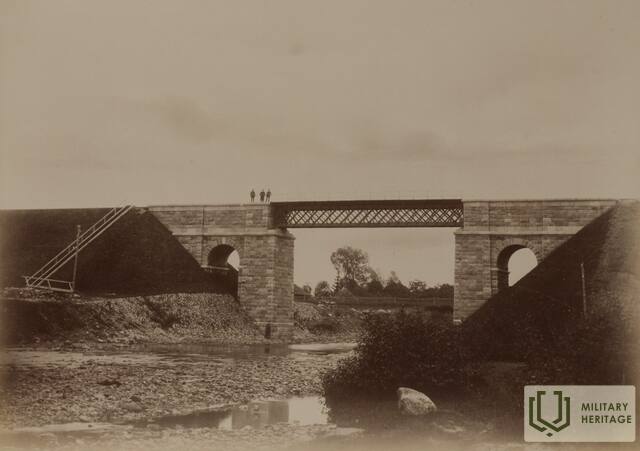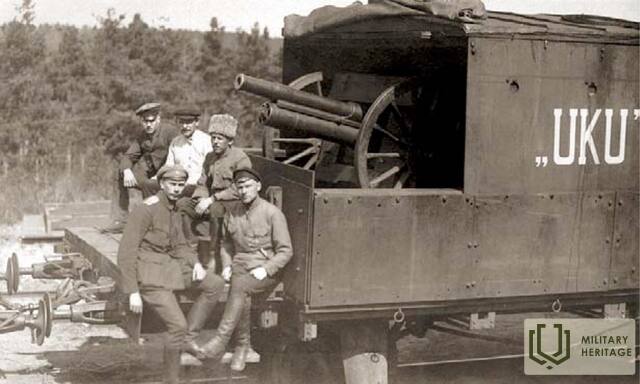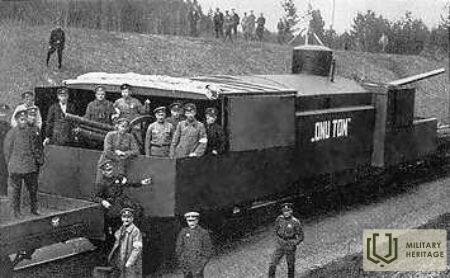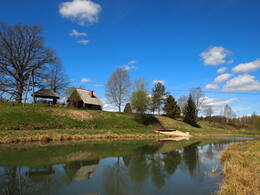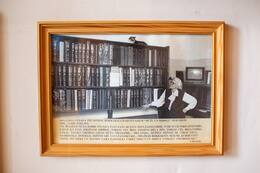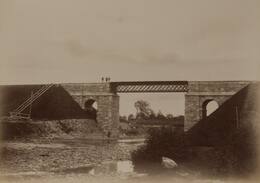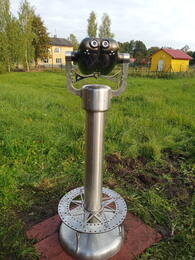Бой у моста через реку Амата
Цесисская битва является одним из важнейших этапов Освободительной войны Латвии и занимает важное место в истории Освободительной войны Эстонии.
Цесисская битва – один из важнейших этапов Войны за независимость Латвии. Он также занимает важное место в истории Освободительной войны Эстонии. Латвийская Республика была основана 18 ноября 1918 года. Уже в декабре 1918 года недавно созданному Временному правительству Латвии пришлось организовать оборону от угрозы наступления большевистских войск со стороны Советской России. В конце декабря 1918 года в Курземе отступили недавно сформированные части Национальной гвардии или по-немецки Ландесвер, которые формировались из латышских, немецких и русских подразделений. В то же время Временное правительство Латвии обратилось за помощью в Эстонию, где в феврале 1919 года проживающие в Эстонии латыши начали формировать так называемую северную латышскую бригаду, которая была включена в состав эстонской армии. 16 апреля 1919 года немецкие части ландесвера организовали переворот в Лиепае, свергнув Временное правительство Латвии, которым руководил Карлис Улманис, и создав собственное правительство под руководством пастора и писателя Андриевса Ниедры. Когда 22 мая 1919 года части ландесвера вернули Ригу, это полностью деморализовало советские войска, и они быстро отступили из Видземе в Латгалию. Части Ландесвера следовали за ними, пока не столкнулись с частями Эстонской армии и Северолатышской бригадой. Между двумя сторонами начался конфликт, который перерос в Цесисскую битву.
Бой у моста через реку Амата произошел 5 июня 1919 года между бронепоездами эстонской армии и частями немецкого ландесвера. Это столкновение положило начало первому этапу Цесисской битвы, которая продолжалась до заключения перемирия 10 июня. Цесисские сражения возобновились с новой силой 19 июня атакой ландесвера и Железной дивизии на Лимбажи и последующей атакой в направление Валмиеры. В течение нескольких дней ожесточенных боев эстонская армия и части Северолатышской бригады остановили атаку, перешли в контрнаступление и окончательно разгромили немцев. Конфликт обострился из-за неуступчивости обеих сторон в вопросе военных действий в Видземе - части Эстонской армии и Северолатышской бригады атаковали с севера и оккупированных территорий вплоть до Валмиеры, успешно продвинулись в направлении Гулбене и Мадоны, дойдя до Екабпилса. , а части ландесвера должны были выйти в район Апе-Алуксне. Железнодорожные линии Иерики – Гулбене и Иерики – Валка имели важное значение, предоставляя возможности для транспортировки и снабжения. Поэтому возможность контролировать стратегически важный железнодорожный узел в Иерики была важна для обеих сторон, вовлеченных в конфликт.
После освобождения Северной Видземе от большевиков 2 июня в Цесис прибыло командование Северолатышской бригады. В это же время в Иерики прибыл немецкий бронепоезд и потребовал разрешения выдвинуться на Цесис. В последующие дни были показаны демонстрация силы, интенсивная переписка и переговоры между представителями Эстонской армии, Северолатышской бригады и Ландесвера, каждая из которых пыталась достичь своей цели: Ландесвер - продолжать продвижение на север, а Эстонской армии - заставить ландесвер отступить на линию устье реки Гауя - Сигулда - Нитауре - Вецпиебалга - Яунгулбене.
Для выяснения ситуации с железными дорогами и проверки, не разрушают ли немцы железную дорогу, два эстонских бронепоезда — № 2. и № 4 — начали неспешно разведывать обстановку в направлении Риги 5 июня около 1:45. вечера. Подполковник Николай Рекс сопровождал поезда и отвечал за переговоры с ландесвером, начальник штаба бригады Северной Латвии полковник-лейтенант Волдемарс Озолс и военный представитель Соединенных Штатов Америки капитан Доули (или полковник Уорвик Грин по другим данным). К операции был также прикомандирован хорошо ориентирующийся в местных условиях солдат 8-й студенческой роты недавно сформированного 2-го Цесисского пехотного полка Карлис Дзиркалис. Возле моста через Амату караульный солдат остановил состав, объявив, что немцы заминировали мост. Пока саперы обыскивали мост, с другой стороны внезапно раздались выстрелы, ранив сержанта-эстонца и убив офицера. Немедленно из близлежащего леса появилась цепь солдат Ландесвера и открыла огонь по бронепоезду. В то же время немцы попытались окружить другой поезд, но он отогнал их артиллерийским огнем.
Цесисская битва остановила и ограничила экспансию Германии в Прибалтике. Масштабы этих боев сравнимы с так называемой Бермонтиадой осенью 1919 года под Ригой. В Эстонии они называются Võnnu lahing, а кульминация победы в этих сражениях — День Победы 23 июня — отмечается как национальный праздник.
Узнайте больше о Цесисской битве на специальном туристическом маршруте: По следам Цесисской битвы - https://militaryheritagetourism.info/en/tours






Связанная хронология
Связанные темы
Связанные объекты
Место отдыха «Meža kaujas»
Место отдыха «Meža kaujas» находится на месте основных Цесисских сражений у моста через Амату. Посетителям предлагается рассказ о Цесисских боях и различные программы - походы и поездки на важнейшие места Цесисских боев, командные бои. После этого посетители могут отведать бодрящий «боевой суп». Железнодорожный мост через Амату сыграл очень важную роль на протяжении всего периода Войны за независимость, так как здесь произошли первые столкновения между эстонской армией и ландесвером. 5 июня 1919 года у железнодорожного моста через Амату произошел первый бой эстонских эшелонов с прибалтийским подразделением ландесвера. Ландесвер, зная, что приближается...
Музей Мелании Ванаги и Сибирская землянка
Музей Мелании Ванаги располагается в сельской школе Амата Цесисского района. В музее представлены материалы о жизни, литературном творчестве, семье и судьбе писателя и историка культуры Мелании Ванаги: видеоматериалы о Сибири и проживающих там депортированных латышах, сибирская землянка – заочная поездка к месту депортации писательницы в село Тюхтет, Красноярского края. Внешний вид и планировка землянки дают реальное представление о жизни на чужбине. В землянке хранятся уникальные исторические предметы, привезенные из музея Тюхтета - березовая посуда туесок, глиняная кружка крынка и керосиновая лампа. В музее есть видеоинтервью с политически...
Мемориальное место у станции Амата - эшелон № 97322
Находится в Драбешской волости Аматского уезда, недалеко от бывшего здания вокзала Амата.
Можно осмотреть мемориал депортированным с информационным щитом и сквером.
...Железнодорожный мост через Амату
Находится в Драбешской волости Цесисского края, недалеко от места отдыха «Межа кауяс».
Через Амату есть железнодорожный мост.
...
Бинокль виртуальной реальности "Цесисские битвы"
Цесисская битва стала одним из важнейших поворотных моментов в ходе Освободительной войны Латвии (1918–1920). 5 июня 1919 года первый этап Цесисского сражения начался со столкновения бронепоездов эстонской армии с частями ландесваров у железнодорожной станции Иерикай у моста через Амату. В ознаменование этого события рядом со станцией Иерикай был создан туристический объект, предлагающий прикоснуться к истории истории с помощью возможностей, предоставляемых современными технологиями, — с помощью виртуальной реальности. Пятиминутный ролик «БИТВА ЗА ОФИСНЫЙ МОСТ» можно смотреть бесплатно в бинокль виртуальной реальности каждый день...




